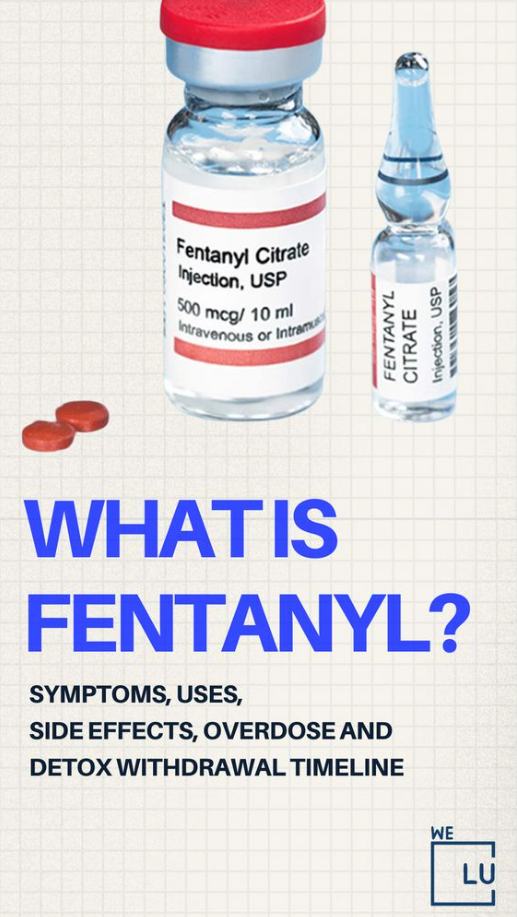What Is Ice Drug?
Methamphetamine has long been a drug of abuse. Recently, a resurgence of its use has spread across the country. A smokable form of methamphetamine hydrochloride with the street name “ice drug” has spread eastward from Hawaii and California. It has strong stimulant properties, is twice as toxic as amphetamine, is associated with multiple system effects similar to cocaine. Treatment of acute drug intoxication is symptomatic and may include hydration, temperature regulation, seizure management, control of agitation, and monitoring for cardiac arrhythmias. Long-term treatment of addiction requires drug rehabilitation and inpatient counseling. [1]
What Is Ice Drug Made Of?
Ice, which has been described as the drug of the 1990s, is a pure form of (+)methamphetamine hydrochloride; it is more dangerous because of its purity and because it can be inhaled. Taken by this route, the drug causes an effect similar to that from an intravenous dose, and much more intense than that from ingestion. The detailed mechanism of action differs from that of cocaine, but the overall stimulant effects of methamphetamine are similar. [2]
Methamphetamine effects, however, persist for hours, whereas cocaine effects are over in minutes. Ice is, therefore, just another agent for abuse by those seeking psycho-stimulation and, as with cocaine, compulsive abusers of amphetamines consume the drug repeatedly and continuously. Unlike cocaine, methamphetamine is a synthetic compound and is manufactured in illicit laboratories within the United States.
Are Meth And Ice The Same Thing?
What drug is Ice? While ice, crystal meth, and meth refer to the same general substance, crystal meth refers to the drug in a more potent and concentrated form. Ice (also referred to as crystal meth) refers to the rock or glass-like form of methamphetamine. Both crystal meth and ice are common street names for meth.
“Ice” is the street name for pure methamphetamine (meth). Meth is a powerful stimulant that increases dopamine and makes a person feel a rush of euphoria and high energy levels. Since a lot of street methamphetamine is adulterated with harmful chemicals, ice is prized for being a pure form of the drug, which causes a longer high.

What Are Other Types Of Meth?
Meth can come in different forms that change the way it is used and the effects it can have on the brain and body. In general, meth comes in three main forms:
- Ice or crystal meth, which has a rock-like appearance
- A fine white powder often referred to as ‘speed,’ which is often snorted
- An oily and a thick brownish-yellow substance called ‘base’
Methamphetamine – meth for short – is a very addictive stimulant drug. It is a powder that can be made into a pill or a shiny rock (called a crystal). The powder can be eaten or snorted up the nose. It can also be mixed with liquid and injected into your body with a needle. Crystal meth is smoked in a small glass pipe. [3]
Meth at first causes a rush of good feelings, but then users feel edgy, overly excited, angry, or afraid. Meth use can quickly lead to addiction. It causes medical problems including:
- Making your body temperature so high that you pass out
- Severe itching
- “Meth mouth” – broken teeth and dry mouth
- Thinking and emotional problems

Effects Of Ice Drug
What is the drug Ice? Ice produces an intense rush that can make a person feel confident and energetic. They may have increased sex drive, itching, and scratching, enlarged pupils, fast heartbeat, or dry mouth. The person may grind their teeth or sweat excessively. The effects can last for up to 12 hours. It can be hard to sleep for a few days after taking Ice drug. People who are ‘coming down’ may have difficulty sleeping, headaches, paranoia, or hallucinations, or feel very irritable and sad. Ice can affect people differently [4] based on:
- How much they take
- How strong it is
- The person’s size, height and weight
- Whether they are used to taking it
- Whether they take other drugs at the same time
Long-Term Effects
People who use ice repeatedly can develop physical problems including extreme weight loss, poor sleep, dental problems, regular colds, trouble concentrating, stiff muscles, heart problems, kidney problems, depression, or stroke.
People who use ice regularly may look much older than they should. They can find everyday activities less enjoyable, have rapid mood swings and become depressed and easily stressed. They are also susceptible to social, work, and financial problems. Snorting the ice can cause nosebleeds, sinus problems, and damage to the nose. Sharing needles increases the risk of tetanus, infections, vein damage, hepatitis B, hepatitis C, and HIV.
Withdrawal From Ice Drug
Symptoms of Ice drug or meth withdrawal [5] may include:
- Feelings of fatigue, lethargy, and excessive sleepiness (typical of withdrawal from stimulant medications) are common
- Increased appetite, dry mouth, and some episodes of jitteriness generally occur
- Depression, apathy, feelings of hopelessness, and thoughts of suicide
- Extreme cravings for more meth
- Psychotic symptoms such as paranoia, hallucinations, and delusions
A significant number of individuals report feelings of depression, which were also noted to decline in a linear fashion over the course of the withdrawal time period. These depressive symptoms can be significant and associated with thoughts of suicide. In addition, research has indicated that a good number of individuals who relapse do so because of feelings of depression, apathy, hopelessness, etc.
Extreme cravings for methamphetamine also occur during the withdrawal process but have been noted to decline rapidly. Cravings for methamphetamine during withdrawal appear to be associated with the level of depression occurring in the individual. In addition, as one would expect, research indicates that the more intense and frequent the cravings an individual in withdrawal from methamphetamine experiences, the higher the probability that the individual will relapse during the withdrawal syndrome.
Ice Drug Psychosis & Overdose
People who use ice can suffer from paranoia, hallucinations, memory loss, and difficulty sleeping. Frequent high doses can cause ‘ice psychosis’ with paranoid delusions, hallucinations, and unusual, aggressive, or violent behaviors. This can last a few days. People who take a large amount or a strong batch are at risk of overdose. The signs of meth overdose include:
- Heart palpitations
- Breathing problems
- Seizures (fits)
- Uncontrolled jerking
- Being very agitated and confused
- Sudden, severe headache
An overdose can lead to cardiac arrest, unconsciousness, or death. If you suspect someone has overdosed on ice, call an ambulance.

Can I Become Dependent On Ice Drug?
People quickly need larger doses of ice to produce the same effect, making ice highly addictive. Some users feel they need the drug just to get through the day. Withdrawal can be difficult and can lead to cravings, increased appetite, confusion, irritability, aches and pains, exhaustion, sleep problems, anxiety, depression, and paranoia.
What If I Use Other Drugs Or Alcohol Together With Ice Drug?
Using ice along with drugs like speed or ecstasy increases the risk of a stroke. Using it with alcohol, cannabis (marijuana) or benzodiazepines increases the risk of an overdose.
Treatment For Ice Drug Misuse
Clearing Ice drugs from the body and overcoming withdrawal symptoms is the goal of detox, which is the first step of treatment for meth addiction. [6] Here at We Level Up TX, a comprehensive team prescribing medications can alleviate your withdrawal pains while monitoring your health 24 hours during the detox. We prioritize your safety and comfort because this is a fragile and challenging time for you.
Once detox is complete, a new doorway in treatment opens up, which is referred to as a residential level of care. Our residential care program slowly and effectively introduces the individual into an atmosphere of therapeutic growth, marked by master’s level therapists, clinicians, group counselors, psychiatrists, and a community of like-minded individuals with the same aim: to attain sobriety and live a great life.
Some of the many modalities applied and practiced within our residential treatment facility are:
- Cognitive Behavioral Therapy
- 12-Step Groups
- Group Therapy
- Biofeedback
- Alumni Support
- Stabilization
- Holistic Therapy
Our treatment tailors the program to the individual and the individual to the program of recovery. We begin by assessing our client’s history of mental health, drugs, and alcohol-related past. The needs of each patient are specific and personalized because we aim to provide comprehensive support for mental health, addiction, and dual diagnosis treatment. Our supportive environment is designed accordingly to give patients 24-hour care for sobriety. Most importantly, we hope to have our clients live comfortably within the facility during this crucial and fragile time.
We prioritize removing temptations for relapse and applying an air of recovery into every component of the treatment timeline, including meth addiction treatment. We Level Up TX finds that when clients are living in a supportive community, especially during their early recovery process, they can truly focus on what matters most: their recovery.
Above all, if you or a loved one is struggling with Ice drug or Ice drug abuse, reach out to us because we may be able to help you explore treatment options.
Sources:
[1] Ice–a new drug of concern? – National Center for Biotechnology Information
[2] Ice: a new dosage form of an old drug – National Center for Biotechnology
[3] Methamphetamine – U.S. Department of Health and Human Services National Institutes of Health
[4] Ice (crystal meth) – https://www.healthdirect.gov.au/ice-crystal-meth
[5] Meth Withdrawal: Signs, Symptoms & Treatment – https://americanaddictioncenters.org/meth-treatment/withdrawal
[6] We Level Up » Rehab » Meth Addiction Treatment





